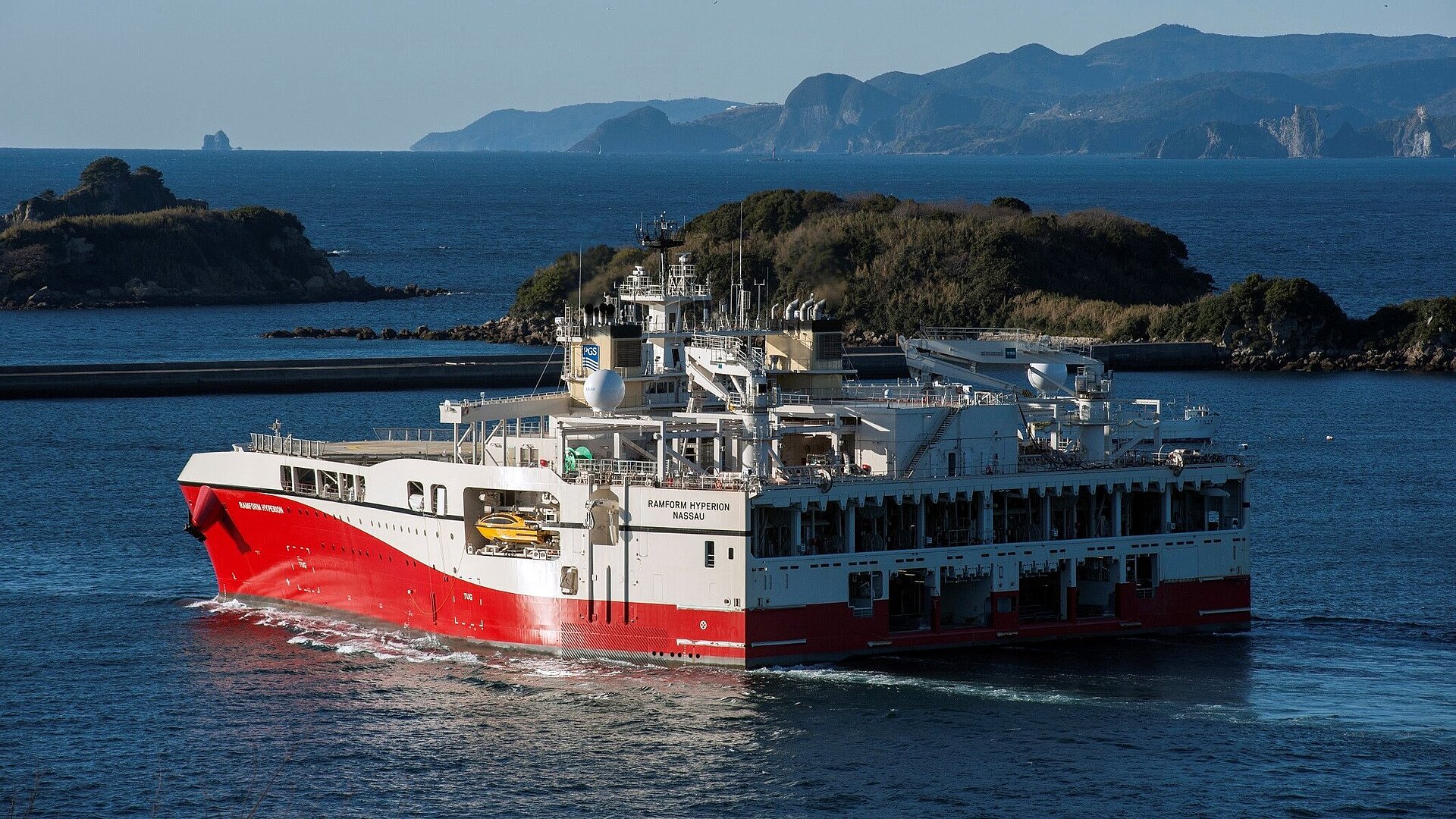
Marlink achieves record upload speeds for survey ship

The data transfer was achieved using Marlink’s network of high throughput GEO satellites, with the focus on delivering data at the required speed specifically to shore
(Source: Marlink)
Engineers at communications company, Marlink, have developed unprecedented uplink speeds from the seismic survey vessel, Ramform Hyperion, owned and operated by Norwegian surveying services company, Petroleum Geo-Services (PGS). The vessel’s hybrid VSAT installation has now been upgraded to enable seismic data to be transferred to shore-based receivers at speeds of more than 250 megabits per second using a geostationary very small aperture terminal – GEO VSAT, the company said.
The Ramform Titan-class vessel, built at Mitsubishi Heavy Industries, Nagasaki in 2017, has a length of 104.2m and a beam of 70m. It can pull 24 streamer reels, 16 abreast with a further eight in a second row.
This permits flexibility and efficient acquisition of high-volume exploration 3D, high-density 3D or 4D undersea imaging, and anything in between. Now, the data can be transferred quickly and efficiently for processing in real time.
Marlink’s engineers designed a system based on a 1.5-m VSAT antenna which enabled the transfer of 2.7 terabytes of data from ship to shore in 24 hours. The setup enabled an average speed of more than 230 megabits per second upload, Marlink said, using its network of high-throughput GEO satellites.
The project aimed to evaluate the performance of VSAT services in a dynamic marine environment. Signal stability, latency, and adaptability to varying weather conditions were relevant metrics in the assessment.
PGS senior vice president, Technology & Digitalization, Erik Ewig, commented: “Operating in a highly demanding and specialised sector, our demands are for partners who are willing to push the boundaries of what is possible today and tomorrow. The real-time data transfer achieved on Ramform Hyperion has transformative implications for our ability to quickly move large volumes of seismic data from vessels to the cloud and start imaging the seismic data in parallel with ongoing data acquisition.”
Tore Morton Olsen, president Maritime, Marlink, said: “For operators like PGS, the pursuit of cutting-edge technology that can create the highest possible operational efficiency is paramount and a vision we share. This ground-breaking collaboration marks a significant milestone for the maritime industry, signifying a paradigm shift in upload-speeds for geophysical survey operations at sea.”
